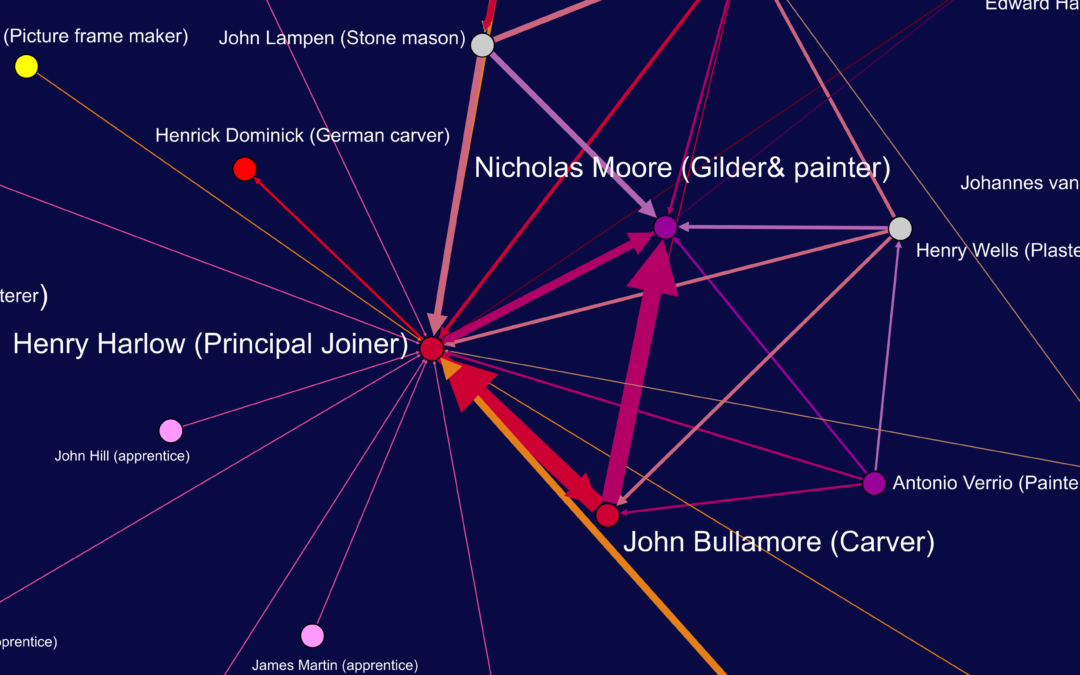By Laurie Lindey
The British and Irish Furniture Makers Online (BIFMO) project is a partnership between the Institute of Historical Research and the Furniture History Society. It encompasses research, resources, training and events to engage with a global community of researchers, students, genealogists and the art trade.
At its heart is the BIFMO website: a 70,000 person biographical repository of information relating to British and Irish furniture makers and the furniture trade, covering the period 1640-1840. Important developments to BIFMO are currently underway, for launch and publication in the coming months, as Dr Laurie Lindey — BIFMO’s research officer — explains.
The BIFMO project — a research partnership between the IHR and Furniture History Society — is currently undergoing major changes to its content and online functionality. With these changes, we aim to make BIFMO the one-stop definitive resource for people interested in the history of British and Irish furniture makers. Our work to develop BIFMO takes two major forms: first, additions to its coverage of the furniture trade, keeping in step with recent research and discoveries in the field; and, second, enhancements to BIFMO site which will enable more sophisticated searching across the site’s 70,000 records, and new ways of visualising selected data via interactive visualisations.
New content for BIFMO
More than 50,000 of the biographical entries currently in BIFMO derive from an earlier print collection: the Dictionary of English Furniture Makers, 1660-1840, published by the Furniture History Society in 1986. In the first strand of improvements, a small team of editors is now revising and updating the contents of hundreds of the biographies first published in the Dictionary. The updating of BIFMO’s biographical coverage combines revisions to existing entries, as well as the inclusion of first-time biographical accounts of recently discovered tradesmen who were not included in the original collection.
The new content for these biographies (both revised and new) has been informed by a systematic review of scholarly furniture history journals published over the past 33 years, carried out by a team of four research assistants over eight months in 2018. As a result of this work, BIFMO will see an extension in the chronological range of its biographical coverage, taking it back to the beginning of the seventeenth century and forward to the early years of the twentieth century.
From July 2019 we’ll begin publishing the fruits of these research projects in the first updates to existing content, as well as rolling out of new entries of recently discovered furniture makers. Further new content will come later in 2019 in the form of three new data sets to be added to BIFMO: Francis Bamford’s Dictionary of Edinburgh Furniture Makers 1660-1840, John Stabler’s A Dictionary of Norfolk Furniture Makers, 1700-1840, and Cliff Webb’s transcription of London Upholders’ Company apprenticeship bindings, 1702-1770. This will add details of approximately 3,300 new people to the BIFMO database.
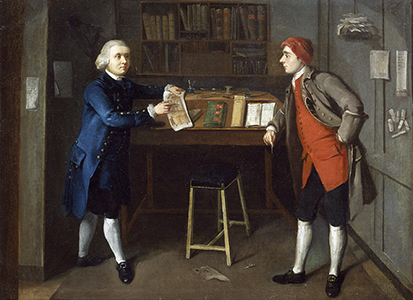
In a small number of cases we’ll also commission new biographies for some of the most important makers in the eighteenth-century furniture trade: individuals including Thomas Chippendale snr (1718-1779), and William (c.1703-1763) and John Linnell (1729-1796) on whose lives scholarship and interpretation has moved on since the 1980s. These new, and much extended, biographies of major figures, each written by subject specialist, will similarly incorporate the key research findings that have shaped our understanding of these makers over the past 40 years.
Accuracy and scholarly judgment are central to this endeavour. In keeping with this, all updates of BIFMO content will be overseen by members of the project team and by its Editor, the noted furniture historian, Dr Adam Bowett. And as updates begin change to the content of BIFMO, we’ll also retain an archived version of the original 1986 Dictionary (and each of the original entries) by creating a searchable version available on British History Online, allowing scholars to compare editions, and so trace current and future developments in furniture history.
New search options for BIFMO
In tandem with this editorial programme, the BIFMO team is also working closely with members of the IHR’s Digital group to make significant enhancements to the project’s website. Key to these is the creation of a 670-item taxonomy that provides multiple ways to semantically tag existing and new biographical content. The taxonomy is structured around five main top-level categories — ‘Styles’, ‘Ornamentation/Design’, ‘Occupations’, ‘Materials’ and ‘Objects’ — with a detailed nested hierarchy of attributes within each category heading: for example, Ornamentation/Design –> chamfered; Materials –> Upholstery –> Damask; or Objects –> Cupboards –> Linen press.
Once the relevant tags have been applied to individual BIFMO entries, users will be able to perform meaningful searches across the resource. These will allow researchers to bring together all entries relating, say, to a particular form of ornamentation, or those associated with a designated trade. Unlike simple text searches, this semantic tagging of BIFMO will ensure that users receive the results they seek: all the ‘turners’ by occupation but no ‘Mr Turner’ (unless of course he also happened to be a turner), or the ‘bakers’ (again, profession) without unwanted references to tradesmen resident in Baker Street, and so on.

One important outcome of such tagging is to start to reconfigure BIFMO: from a former collection of printed texts to a repository of research data, of which historians can ask increasingly sophisticated questions about the personalities and practices of the early modern furniture trade. In this way the BIFMO site will also move from being a collection of established facts about the long eighteenth-century furniture trade to a starting point for new research. From this summer BIFMO will also offer a research blog in which these new discoveries will be recorded, and new histories told, by project staff and researchers.
Seeing the furniture trade in new ways
In addition to extended coverage and enhanced searching, the new-look BIFMO will also provide a first set of social network diagrams and historical maps by which it’s possible to visualise aspects of the trade in new ways. Among the visualizations to feature from later this year will be network graphs that chart connections between the craftspeople, artisans, architects and designers who gave their services to notable commissions, such as Ham, Burghley and Boughton houses, in the late seventeenth and early eighteenth centuries. These visual representations of the relationships underpinning the furniture trade provide researchers with new ways of exploring how, and by whom, stately homes were maintained, renovated and supplied at specific points in time.
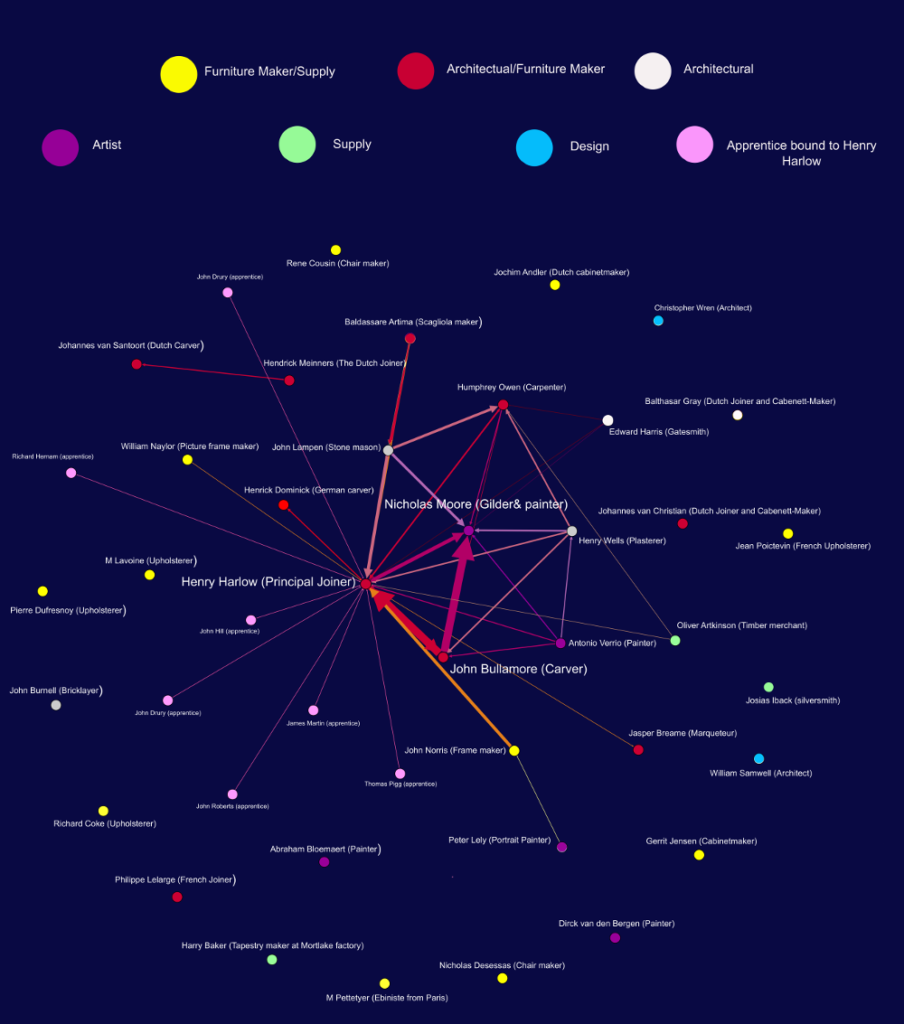
Further research is currently underway to examine the trade networks that made possible the manufacture of and supply to several English stately homes designed by the architects William Kent, Henry Flitcroft and James Gibbs, between 1720 and 1745. Network diagrams like these pull in a wide range of historical figures associated with a specific project. In doing so, they’ve the potential to uncover new working relationships and to highlight the role of previously unrecognised tradesmen. These diagrams offer alternative routes to link directly to furniture makers’ biographies within BIFMO (since many of those commissioned to work on English stately homes are included in the resource), as well as a spur to add first-time entries of ‘discovered’ tradesmen brought to our attention by new ways of seeing the historical furniture trade.
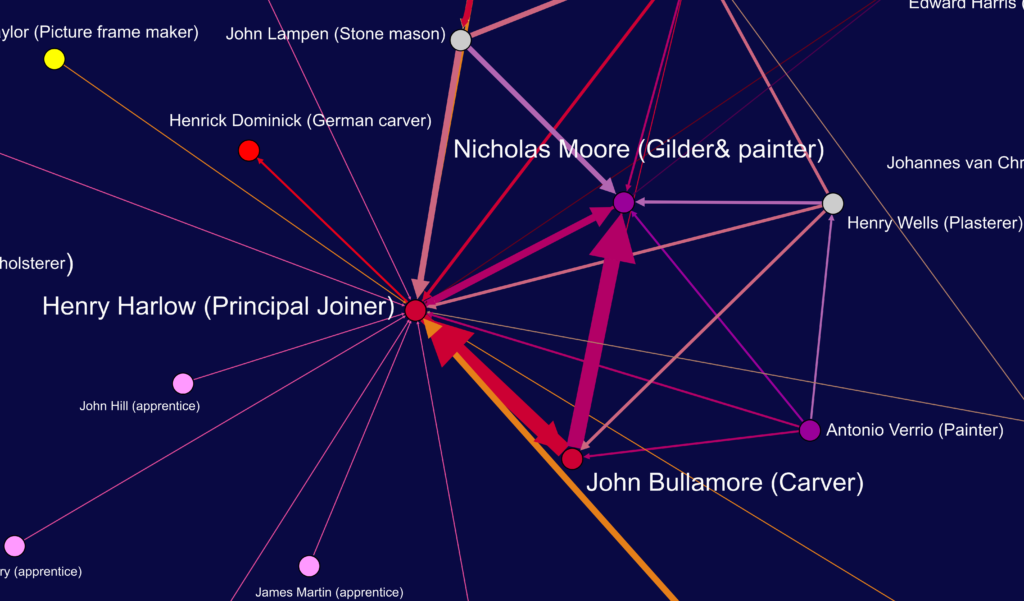
A second visualisation programme, to map BIFMO data, is being undertaken thanks to a collaboration with another IHR initiative, Layers of London. ‘Layers’ is a map-based history project comprising twelve interactive historic maps dating from 1520 to 1945. To these users are able to attach or ‘pin’ historically relevant content, closely intersecting time and place by choosing the image of London that corresponds most closely to their content.
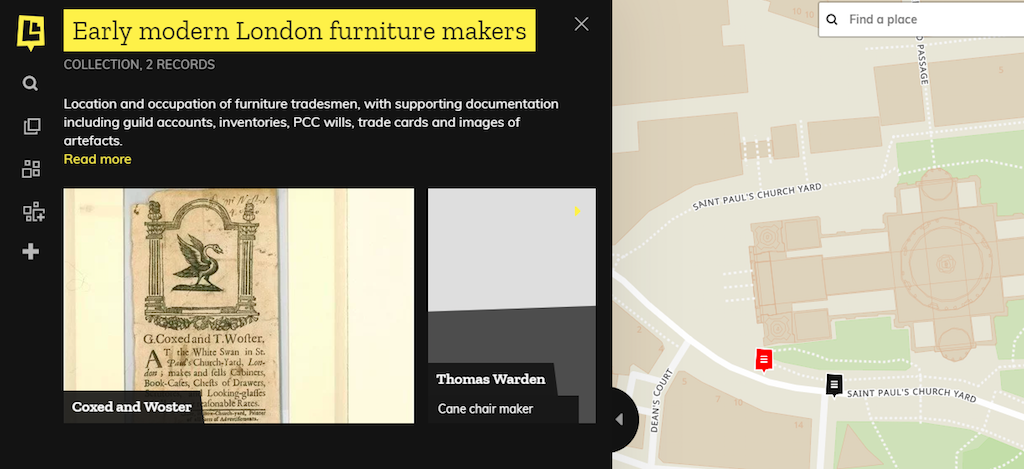
The BIFMO mapping exercise will make use of selected digital maps, starting with an initial geo-referencing and pinning of the residential or workshop locations of London furniture makers active between 1660 and 1725, with street and parish records drawn from the BIFMO database. This will be followed by the addition of a further 10,000 locations, mapping furniture makers across London and its suburbs, up to the beginning of the twentieth century. In some instances, details and images of household and shop inventories, probate wills, trade cards, and published case studies will also be attached to furniture makers’ geographic pinpoint, so providing easy access to documents relating to makers and their premises. Layers of London maps and BIFMO biographies will be linked, thereby enabling users to move seamlessly from source to source.
Work on these several strands continues over the next few months. The new developments to BIFMO — editorial, functional and visual — will come on stream from July 2019. After this, subsequent content updates and technical developments will further enhance the site in the months to follow. So watch this space! https://bifmo.history.ac.uk/
Dr Laurie Lindey is research officer for the Institute’s BIFMO project, part of the IHR’s new Centre for the History of People, Place and Community. Laurie’s principal research interests lie in the social, economic, and cultural history of London in the early modern period, with particular interest in the people, crafts and guilds associated with furniture making.

